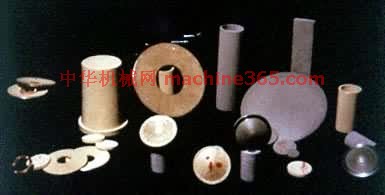1) porous mediums


多孔含湿材料
1.
n this paper,a method of using moist porous mediums to cool the roof surface of buildings by passive water evaporation,is presented and a mathematical model for the process of heat and mass transfer in moist porors mediums by using solar energy is set up.
提出利用多孔含湿材料太阳能被动蒸发冷却建筑屋面的新方法,建立了多孔含湿材料利用太阳能被动蒸发的热质耦合传递数学模型,通过理论分析、数值计算和实验测试,揭示了热过程规律。
2) wet porous material


湿多孔材料
1.
Based on the literature research, questions of heat insulation and cooling on the building envelop with wet porous material by the solar energy are discussed.
本文在研究文献的基础上,探讨了建筑屋面在铺设湿多孔材料的条件下利用太阳能被动隔热降温问题。
3) porosity moisture-conditioned material


多孔调湿材料
1.
Experimental study on porosity moisture-conditioned material used on building envelope;


用于墙体表面的多孔调湿材料实验研究
4) porous saline material


含盐多孔材料
1.
The heat and mass coupling equation system to the porous saline materials in one-dimensional temperature and mass degree field was established.
对含盐多孔材料内部温度、质度分布作了现场测定和数值模拟。
5) moisture porous body


含湿多孔体
1.
The dynamic moisture distribution of a moisture porous body has been calculated by the reverse method.
建立了兼顾湿度影响的非稳态热传导方程,利用反问题法求解含湿多孔体中动态湿分布,建筑墙体静态热工实验台对加气混凝土墙体的实测表明,该方法可行。
2.
A transient heat conduction equation with the 3rd heat and mass transfer boundory condition of a moisture porous body is presented and the numerical method is discribed.
建立了第三类热湿传递边界条件下含湿多孔体的非稳态热传导物理模型并数值求解。
6) porous material


多孔材料
1.
Study on the preparation of poly(styrene/divinylbenzene) porous materials by high internal phase emulsions as templates;
聚苯乙烯/二乙烯基苯多孔材料的制备工艺研究
2.
Preparation and characteristics of Ti-Al based alloy porous material;


Ti-Al系金属间化合物多孔材料的制备和性能
3.
Research progress in the preparation of highly porous materials by concentrated emulsions as templates;
新型聚合物多孔材料的制备研究进展
补充资料:机械工程材料:粉末冶金多孔材料
用粉末冶金的方法製造的﹑内部结构为多孔的材料(或製品)﹐一般由球状或不规则形状的金属或合金粉末经成形和烧结製成﹐又称烧结多孔材料。这种材料为孔道纵横交错﹑互相贯通的多孔体﹐通常具有30~60%体积的孔隙度﹐孔径1~100微米。常用的金属或合金有青铜﹑不锈钢﹑铁﹑镍﹑鈦﹑钨﹑鉬以及难熔金属化合物等。做成的製品有坩堝状﹑碟状﹑管状﹑板状﹑薄膜等。粉末冶金多孔材料的特点是﹕孔径和孔隙度均可控制﹔优良的透过性能﹐且在使用后可以再生﹐因而使用寿命长﹔导热﹑导电﹔耐高温﹑耐低温﹑抗热震﹔抗介质腐蚀﹔比表面积大﹔可焊接和加工等。因此它的综合性能较传统的纸质﹑棉和化纤织品﹑陶瓷﹑玻璃﹑金属丝网等过滤材料为好。在现代技术中﹐多孔材料愈益发挥其重要作用﹐有两方面的主要用途。作过滤器用﹕利用其多孔的过滤分离作用净化液体和气体。例如用来净化飞机和汽车上的燃料油和空气﹔化学工业上各种液体和气体的过滤﹔原子能工业上排出气体中放射性微粒的过滤等。利用其孔隙的作用﹐製造多孔电极﹑灭火装置﹑防冻装置﹑耐高温喷嘴等。多孔电极主要在电化学方面应用。灭火装置是利用其抗流作用而防止爆炸﹐如气焊用的火焰防爆器等。防冻装置是利用其多孔可通入预热空气或特殊液体﹐用来防止机翼和尾翼结冰。耐高温喷嘴则是利用表面发汗而使热表面冷却的原理﹐被称为发汗材料。(见彩图 粉末冶金多孔材料 )

说明:补充资料仅用于学习参考,请勿用于其它任何用途。
参考词条